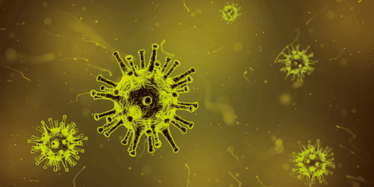Inflammatory News
New research sheds light on how cannabinoids fight inflammation.
Population studies suggest that diets rich in omega-3 fatty acids have a positive impact on the heart and brain, and damp down inflammation. The anti-inflammatory action is mediated by conversion of omega-3 fatty acids into endocannabinoids, but the precise mechanisms have been unclear.
The endocannabinoid system is still relatively unstudied. “The first endocannabinoid receptors were only isolated in 1991 and 1993 and the endogenous ligands were discovered in 1992 and 1994, so there is still a lot of work needed,” says Aditi Das, Assistant Professor at the University of Illinois Urbana-Champaign, who led a new study into omega-3 fatty acid-derived endocannabinoids.
“We were investigating the metabolism of omega-3 fatty acids to form anti-inflammatory metabolites, and separately studying endocannabinoid metabolism,” says Das. It was a natural progression for the group to begin studying omega-3 endocannabinoid metabolism.
In their recently published study (1), the team identified potent anti-inflammatory lipids (fats) produced by a cascade of enzymes from omega-3 derived endocannabinoids. These omega-3 endocannabinoid epoxides were found to interact with cannabinoid receptor type 2 (CB2; see below), and have positive effects on inflammatory molecules in animal tissues. “The key finding was that omega-3 fatty acids, when converted to omega-3 endocannabinoids, can produce similar anti-inflammatory effects to cannabis,” says Das.
The work suggests the possibility of developing drugs to target omega-3 pathways, which could gain targeted medicinal benefits of cannabis with no psychotropic effects. “Next, we need to make stable derivatives of these compounds and test their efficacy as anti-inflammatory and anti-pain drugs,” says Das.
Reference
- DR McDougle et al., “Anti-inflammatory ω-3 endocannabinoid epoxides”, PNAS, 114, E6034–E6043 (2017)
CB2, Immunity and Inflammation

The two main receptors of cannabinoids – whether endogenous, plant-derived or synthetic – are (rather unimaginatively) known as cannabinoid receptor types 1 and 2. While CB1 is responsible for the “high” of THC and has a range of effects in the gastrointestinal, nervous and cardiovascular systems, CB2 is thought to be involved in cannabinoid action in the immune system, including potential functions in controlling inflammation and pain.
CB2 is a G protein coupled receptor, expressed predominantly in immune cells (for example, T cells, macrophages monocytes, and B cells). It’s also expressed in keratinocytes in the skin, the peripheral nervous system, and microglia in the brain.












